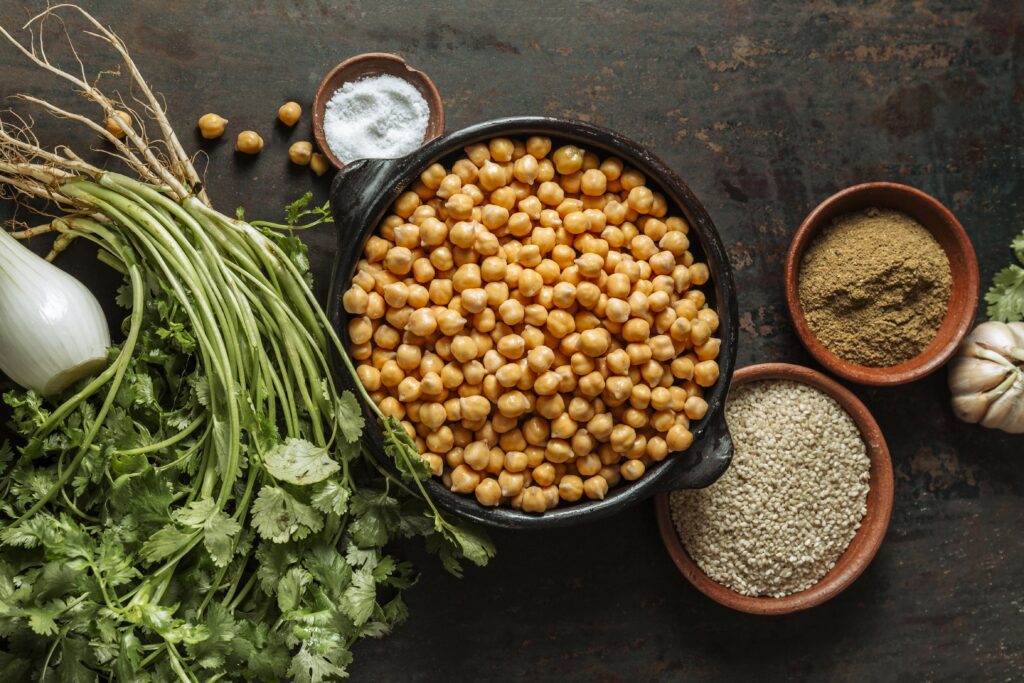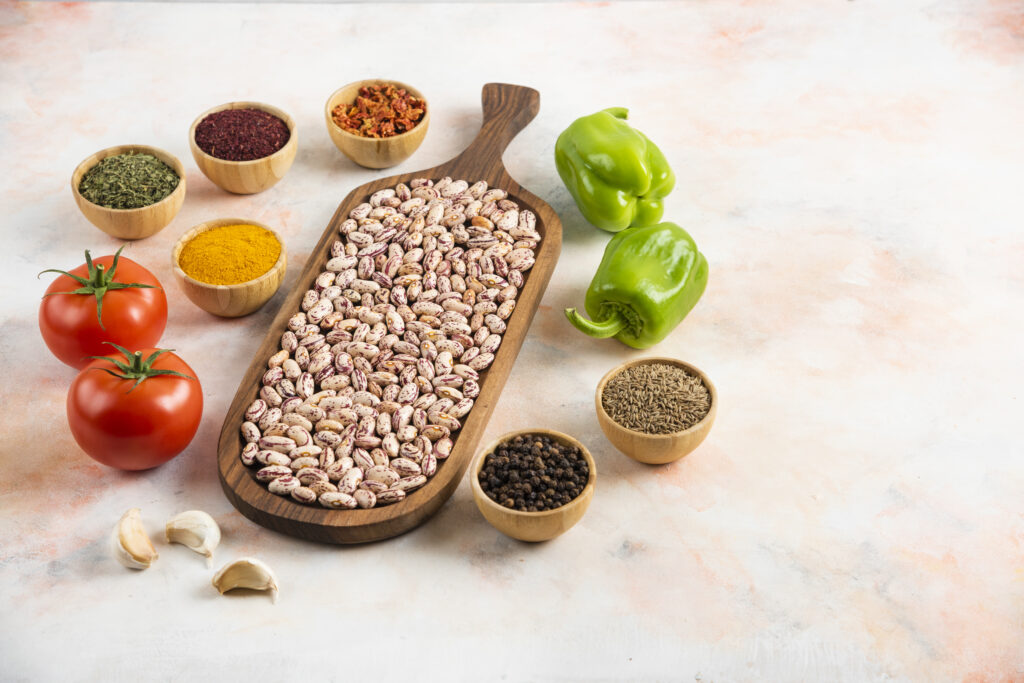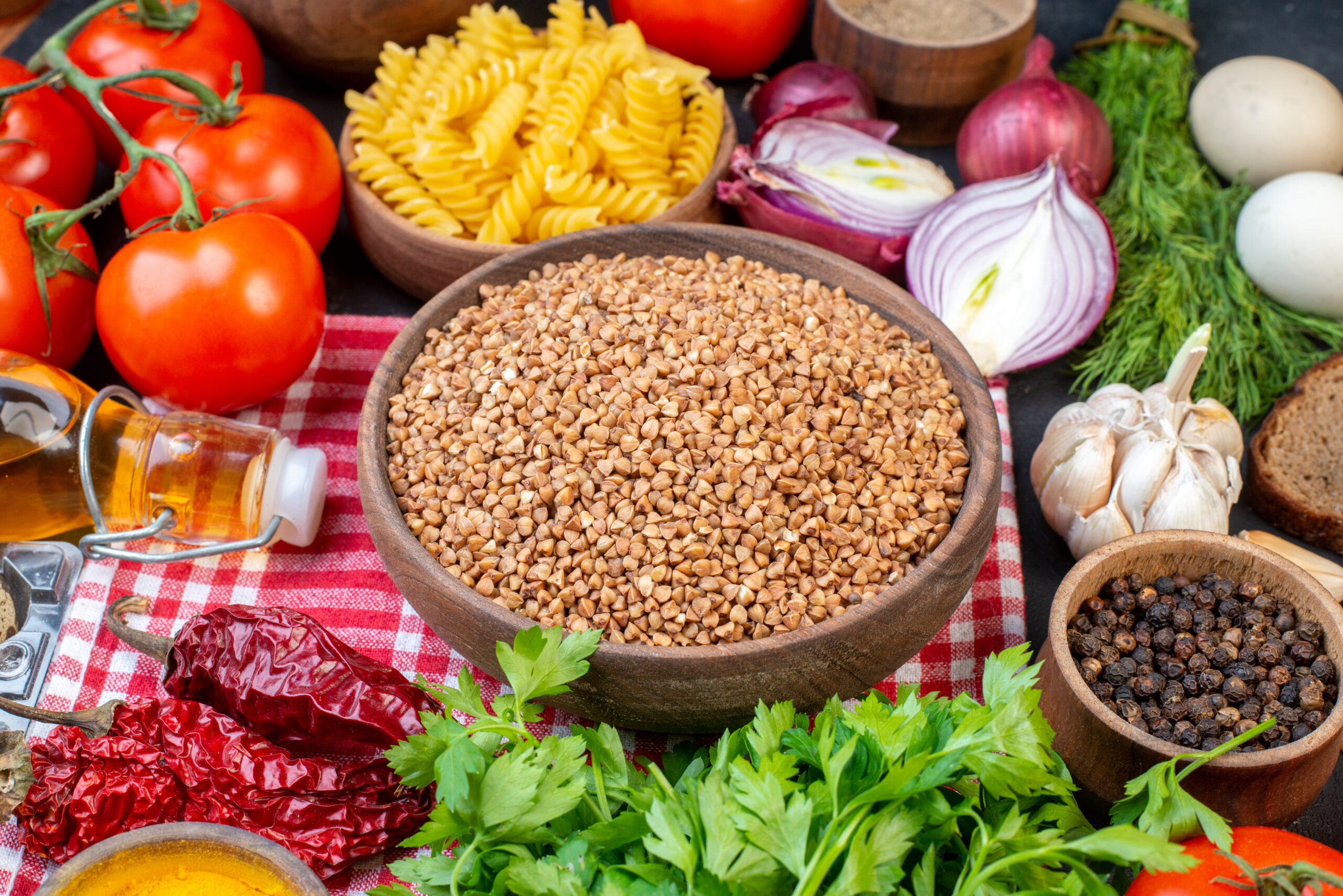Here we are going to share information on the topic “10 unique vegan protein sources.” Being plant-based does not have to equate to a low-protein diet. With these ten delicious protein sources, you can make a well-balanced plate and feel good about feeding your body.
Growing numbers of people are choosing to eat vegan or vegetarianism, raising concerns about whether they are obtaining adequate nutrients—like protein—in their plant-based diet. The good news is this: As a vegan, obtaining your recommended daily intake of protein is simple. The key? It all comes down to balance.
A key component of keeping a vegan diet in balance is avoiding turning into a “junk food vegan,” which could leave you lacking in protein and with little energy. For instance, your body won’t get enough protein—or pretty much any other nutrient—from a meal consisting solely of frozen vegan waffles and chips to meet its energy requirements. However, if you make the most of a plant-based diet and load up on vibrant veggies, filling grains, and tasty potatoes, you should have no trouble achieving your daily protein need.

10 unique vegan protein sources
How to Check Whether You’re Getting Enough Protein in Your Vegan Diet
It’s easy to determine if someone is hitting their protein goals if they’re unsure. Get a meal monitoring app and log your typical diet for a few days using something like Cronometer or MyFitnessPal. Make sure you’re meeting your daily protein intake by keeping an eye on it. In general, the 2020–2025 Dietary Guidelines for Americans advise consuming 10%–35% of your total calories as protein. For a diet of 2,000 calories per day, that equates to roughly 200–700 calories.
If you discover that you’re not getting enough protein, consider including more of the foods listed below in your meals. Recall that you should speak with a certified dietitian and keep closer tabs on your protein intake if you have any additional reasons, such as being pregnant or adhering to a strict exercise regimen at the gym, that may require you to consume more protein.
The Greatest Proteins for Vegans
This comprehensive guide, which is free of dairy, eggs, and meat, features some of the greatest vegan protein sources out there. This list includes some staples like beans and tofu, but it also includes frequently disregarded items like green peas and wild rice that are incredibly high in protein.
10 unique vegan protein sources
1. Soy
Though it doesn’t have to be, the widely consumed plant protein is frequently connected to premade patties or mysterious “meat” loaves. A plant-based diet that is healthy can include soy protein. Tofu, tempeh, edamame, and even soy milk are excellent sources of protein for a diet. Try making a stir-fry with tempeh or tofu, boiling some edamame for a simple snack, or adding soy milk to your cereal in the morning.
Many of the health advantages of eating soy are linked to consuming 2-4 servings of soy-based meals per day, per a 2016 review published in Nutrients. According to the USDA,
Typical soy foods have the following amounts of protein:
- Tempeh: 1/2 cup yields 17 g of protein.
- Protein content of shelled edamame: 9 g/1/2 cup
- 9 g of protein per 3 ounces of tofu
- 7 grams of protein per cup of soy milk
2. Yeast for Nutrition
The name of nutritional yeast sounds technical, but don’t let that deter you. It is an inactive yeast with a distinct, cheesy, umami-rich taste that is affectionately referred to as “nooch” by the vegan community. The USDA reports that it contains 4 grams of protein per 2 tablespoons and, as an added benefit, is a fantastic vegan source of vitamin B12.
Many vegans require supplements because animal foods make up the majority of food sources for vitamin B12. If you follow a vegan diet, check with your healthcare practitioner to make sure you’re receiving enough. Savor nutritional yeast with your next pasta dish, in dressings or sauces, or mixed into a bowl of popcorn.
3. Seitan
A mainstay of plant-based diets is seitan. Vital wheat gluten, the primary protein found in wheat, is used in its creation, giving it a chewy, robust feel that, in certain recipes, almost exactly resembles meat. It is vital to remember that seitan is not gluten-free because it contains wheat gluten throughout its production.
According to the USDA, a 3-ounce portion of seitan has 20 grams of protein. You can buy essential wheat gluten to create your own seitan, or you can purchase it precooked in the refrigerator department of your local grocery or natural foods store, just next to the tofu.
4. Whole Grains
Though whole grains are usually associated with carbohydrates, they can also add extra protein to any meal. In addition to adding fiber, vitamins, and minerals to your diet, many kinds are naturally high in protein. Eat a warm cup of porridge in the morning, a quinoa salad for lunch, or wild rice-stuffed peppers for dinner to increase your daily consumption of grains.
The USDA has provided a brief list of whole grains along with their protein content.
For cooked grains, all measurements are given.
- 8 g of protein per cup of quinoa
- One cup of wild rice has 6.5 g of protein.
- 6 g of protein per cup of oats
- 5.5 grams of protein per cup of buckwheat
5. Green Veggies
Green veggies are a great source of protein and have benefits beyond their vitamin and mineral content. To balance out your plate, foods like spinach, Brussels sprouts, and green peas all have respectable protein content. In addition, greens are low in calories, high in fiber, and rich in antioxidants. Try roasting Brussels sprouts for a deliciously crunchy side, tossing cooked spinach into spaghetti, or incorporating green peas into a curry.
The USDA lists a variety of green vegetables along with the protein content of each.
Every measurement is based on cooked veggies.
- 5 g of protein per cup of spinach
- Green peas: 1/2 cup yields 4 g of protein.
- Brussels sprouts: 1/2 cup yields 2 g of protein.
6. Sprouted Bread
Because of its well-known brand name, sprouted grain bread is frequently referred to as Ezekiel bread. It is a whole-grain baked product with a high protein content.
The USDA states that one slice includes 4 to 5 grams of protein, depending on the type you choose. This implies that, before you even add the contents, a sandwich made with two slices of bread has a staggering 10 grams of protein. You may also use sprouted-grain bread for toast, breadcrumbs, or breakfast strata.
7. Potatoes
Due to its many harmful variations (think of you, loaded potato skins and french fries), the humble potato isn’t always thought of as a health food, but it may truly be a nutritious addition to your diet.
According to the USDA, a single large russet potato with skin has 8 grams of protein, which is more potassium than a banana. It also has a high amount of fiber. Although they don’t have as much protein as other types, such as red or sweet potatoes (7 grams and 2.5 grams, respectively), they can nevertheless help you meet your daily intake target. Try mashed, roasted, baked, or scalloped potatoes in all their forms.
The USDA summarizes the protein content of potatoes as follows:
- Potato russet: 8 g for each large spud
- Red potato: 7 g for each large potato
- 2.5 g of sweet potatoes per medium potato
8. Vegetables
Legumes are a cheap and popular option for vegans who want to increase their intake of protein. They also provide a great base for many plant-based recipes. Legumes comprise both beans and lentils, which are excellent sources of plant-based protein. While beans can range from 10 to 18 grams per cup, depending on the kind, many lentil varieties can include up to 18 grams of protein per cup (cooked). Lentils work well as a base for curries, chili, and taco fillings. Because of their great versatility, we love using beans as baked potato toppers, in fritters, or blended into hummus.
Here’s a quick summary of the protein content of beans and lentils based on the USDA.
For cooked legumes, all measurements are given.
- Lentils: 1 cup, 18 g
- 14.5 grams of chickpeas in a cup
- 15 grams of black beans in a cup
9. Seeds
Not simply birds can eat seeds. In a vegan diet, seeds may be an excellent source of protein and fiber. Try blending sesame seeds into tahini or adding flax seeds to oatmeal or baked bread. Additional excellent sources of plant-based omega-3 fats include hemp, chia, and flax. A great source of protein for anyone allergic to nuts is the seed. Toast can be topped with sunflower seed butter, chia seed pudding can be made, or tahini can be blended into salad dressing.
According to the USDA, the following seeds and seed butters have the following protein contents:
- 1 oz. of pumpkin seeds contains 8.5 g.
- 9.5 g of hemp seeds every three tablespoons
- 5 grams of tahini per 2 tablespoons
10. Almonds
A comprehensive plant-based pantry would be incomplete without a variety of nuts, which can be easily added to dishes or enjoyed as a snack. Eating 1.5 ounces of nuts or 2 teaspoons of nut butter several times a week is advised by the American Heart Association. Despite the small serving sizes, each one has a substantial amount of protein. Simple applications include incorporating peanut butter into sauces, tossing walnuts into your next salad, and preparing proportioned almond baggies for on-the-go snacks.
According to the USDA, here is a list of certain nuts and nut butters, along with their respective protein contents:
- 9 g of almonds per 1.5 oz.
- 6.6 g of walnuts in 1.5 ounce
- 8 g of cashews per 1.5 ounces
- 8 grams of peanut butter per 2 tablespoons
Frequently Asked Questions
(10 unique vegan protein sources)
Which vegan dish has the most protein?
Answer: The top 15 foods with plant-based protein
Each portion of the nutritious plant-based foods listed below has a high protein content:
Edamame, tempeh, and tofu. Post on Pinterest Tofu, tempeh, and edamame are some of the plant-based foods that are high in protein when following a vegan diet. Chickpeas, lentils, peanuts, almonds, spirulina, quinoa, and mycoprotein will all be mentioned.
How much vegan protein is 100 grams a day?
Answer: One hundred grams of plant-based protein
- Ten grams of protein in a half-cup of protein granola
- One scoop (20 grams) of plant-based protein powder
- One ounce (five grams) of nuts
- Two grammes (7 grams) of peanut butter
- Two tablespoons, or roughly ten grams, of chia seeds
- Hemp seeds, one tablespoon (4 grams)
- A pair of rye bread slices (10 grams)
How can a vegan consume 70 grams of protein each day?
Answer: Getting enough protein can be challenging for vegans at first, but there are several possibilities. Whole grains such as oats, chickpeas, and lentils are among the greatest vegan sources of protein. The average person should strive to consume 50–70 grams of protein per day, including vegans.
What is consumed by a vegan?
Answer: Plants (fruits, vegetables, grains, nuts, and seeds) and plant-based foods constitute the foundation of a vegan diet. Vegans abstain from eating foods derived from animals, such as dairy and eggs.
What is a meatless way to obtain 100 grams of protein?
Answer: Plant-Based Protein
Peas, beans, and lentils are excellent vegan and vegetarian protein sources. We refer to legumes as incomplete proteins because they are deficient in methionine, a critical amino acid. Legumes do, however, become complete proteins when combined with other protein sources (such as nuts and seeds).
Which plant is highest in protein?
Answer: Although all beans are extremely high in plant protein, lentils have the highest protein content, at almost 18 grams per cup.

Conclusion
(10 unique vegan protein sources)
To sum up, investigating distinct vegan protein sources provides a wide range of alternatives to satisfy dietary requirements and tastes. There are plenty of options to obtain protein from different plant-based sources when following a vegan diet, ranging from lesser-known grains like quinoa and amaranth to adaptable legumes like lentils and chickpeas.
Including these varied options supports sustainable and ethical consumption behaviors, in addition to encouraging a healthy diet. People can support environmental and health consciousness while eating a clean and satisfying diet by embracing a range of vegan protein sources.
So, this is how the topic “10 unique vegan protein sources” has been addressed.
For more information related to these topics,
You may also visit our Instagram page by
Thank you!

